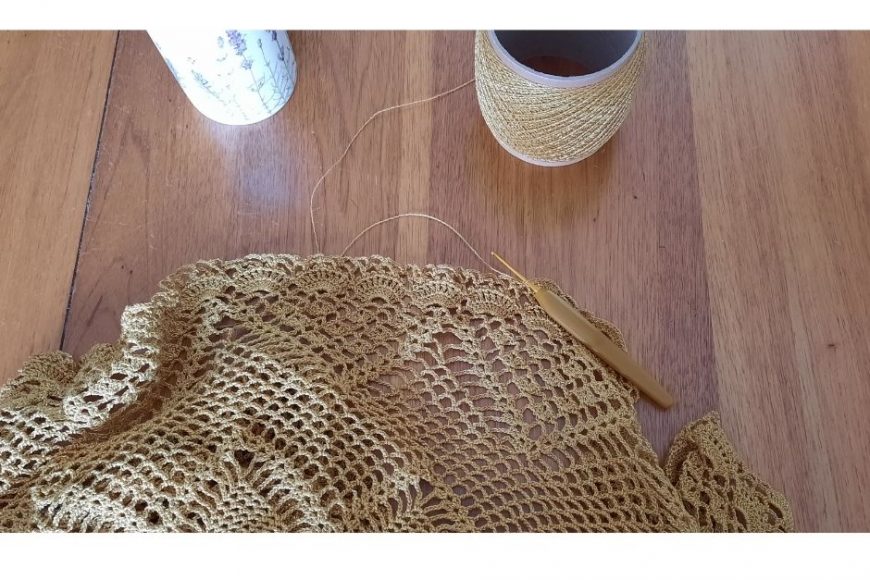Crochet – It’s more than hooks and yarn
The art of crochet has enjoyed a recent boost in popularity – and it’s not hard to see why.
As any devotee will tell you, there’s nothing quite like the feeling of accomplishment that comes from completing a beautiful work of crochet. But it’s not just the thrill of the end result that has people of all ages picking up a hook and yarn. Crochet Australia thought it would be great to try and unravel some of the history behind crochet.
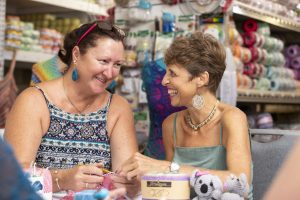 Throughout history, communities all over the world have reaped the benefits of crochet. In fact, no one is really sure exactly where the practice first emerged, although there are plenty of theories. Evidence of crocheting has been found dating as far back as the 16th Century in Europe, China, Arabia and South America. Crocheted fabrics decay with age, but we do know that some of the oldest samples of yarn have been estimated to be up to 7000 years old!
Throughout history, communities all over the world have reaped the benefits of crochet. In fact, no one is really sure exactly where the practice first emerged, although there are plenty of theories. Evidence of crocheting has been found dating as far back as the 16th Century in Europe, China, Arabia and South America. Crocheted fabrics decay with age, but we do know that some of the oldest samples of yarn have been estimated to be up to 7000 years old!
Tribal communities used crochet for practical purposes, like clothing and tools, before moving on to more decorative uses, such as adornments used in ceremonial rituals. By the mid 1800s, crochet had become a popular pastime, with patterns widely available for both practical and decorative items, including things like bird cage covers, lamp shades, tablecloths, tobacco pouches, and a little item known as an “antimacassar” – a cover to protect chairbacks from the hair oil popular with men at the time.
The 1960s and 70s saw crochet take off as a more freeform means of artistic expression, seen in sculpture, fashion and homewares. Crochet Australia and other local craft stores have wide ranges of patterns for these and other ideas. Today, despite the ease with which we can obtain cheap mass-produced clothing and goods, crochet is more popular than ever, and has appeared on the runway for the last three years.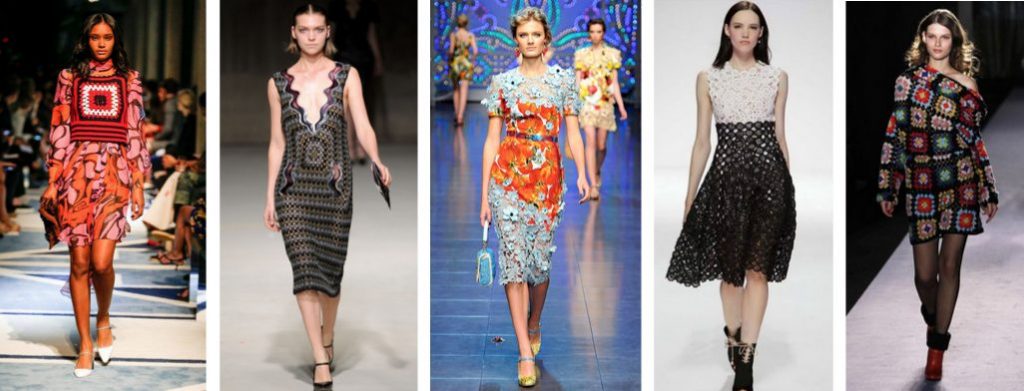
So why do we love it? Besides the thrill of the end result, there are many other positive benefits to developing a healthy crochet habit. Findings continue to emerge from studies around the globe into the rich rewards of crochet, both physically and mentally.
A survey of 8000 crocheters conducted in 2018 by researchers at the University of Wollongong found that:
- 90% of responders reported feeling calmer thanks to crocheting
- 82% reported feelings of increased happiness while crocheting
- 75% said crochet made them feel more useful
The three most frequent reasons cited for taking up crocheting were: to be creative (82.1%), to relax (78.5%) and for a sense of accomplishment (75.2%).
A 2014 study by the American Craft Yarn Council found that more than 90% of knitters and crocheters attributed reduced stress specifically to their craft. With the increasing prevalence of mental illnesses such as anxiety and depression, it’s not a stretch to suggest that a crochet habit is a great skill to embrace and help combat these often debilitating conditions. Crochet Australia and others have plenty of ways to learn that meet your specific learning style.
It’s been found that the rhythmic and repetitive motions of crafts like crochet can help release serotonin, a key factor in helping resolve anxiety and depression for many people. Our “effort-driven reward circuit” – the internal rewards we get when completing tasks with our own hands – not only promotes serotonin release but also releases dopamine and endorphins, which further enhance positive feelings.
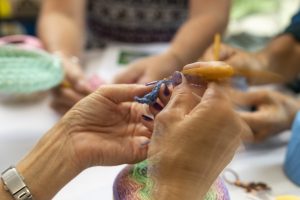 Body aches, tension headaches and restlessness all melt away as you sink your focus into your craft. Heart conditions, skin conditions and mental health issues may all be mitigated through stress reduction.
Body aches, tension headaches and restlessness all melt away as you sink your focus into your craft. Heart conditions, skin conditions and mental health issues may all be mitigated through stress reduction.
As we age, crocheting can also play an important role in keeping the brain active and engaged, which is crucial for warding off degenerative diseases like dementia and Alzheimer’s. The pattern recognition, simple arithmetic and hand-eye coordination necessary in crocheting all contribute to this brain conditioning effect. There are always new techniques emerging to keep your stimulated. Learn about new techniques by following Crochet Australia on Social Media or by subscribing to our Newsletter.
While it’s typically seen as a sedentary activity, crocheting burns a surprising number of calories. It’s been shown that knitting burns around 110 calories per hour – so with crocheting being twice as fun as knitting, do we burn twice as many calories from a decent crochet session?
If taking up a blues-busting, brain-building, calorie-burning, good mood hobby sounds good to you, the great news is, crochet is one of the easiest activities for beginners to get started in. That’s because crochet is:
- Affordable: The minimum you need is a hook and yarn. I recommend a small investment in an Ergonomic Hook (starting from a Clover Amour at $12.60 available at Crochet Australia) as these hooks are less strenuous on your hand. This helps make your crocheting sessions even more enjoyable.
- Accessible: Patterns and step-by-step tutorials are readily available. Check out our website at crochetaustralia.com.au or search online for all the inspiration you’ll ever need.
- Portable: All the basic tools fit easily into a handbag or small satchel.
- Social: Crochet is an excellent hobby to partake in with friends. Join a local craft group which may run classes, or enquire about Crochet Australia’s weekly online classes at info@crochetaustralia.com.au. Read about these here
There are numerous ways to learn to crochet – join a local group, search you-tube, buy books or kits or get lessons. Here at Crochet Australia we sell books and kits and offer group and one-on-one lessons.
Y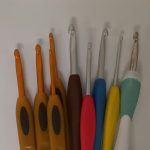 ou’re never too old or too young to start enjoying the benefits of a crochet hobby. So grab some yarn and hook and get stitching today – you’ll be hooked in no time!
ou’re never too old or too young to start enjoying the benefits of a crochet hobby. So grab some yarn and hook and get stitching today – you’ll be hooked in no time!
This article was originally published in Homespun Crochet Magazine July 2021.

